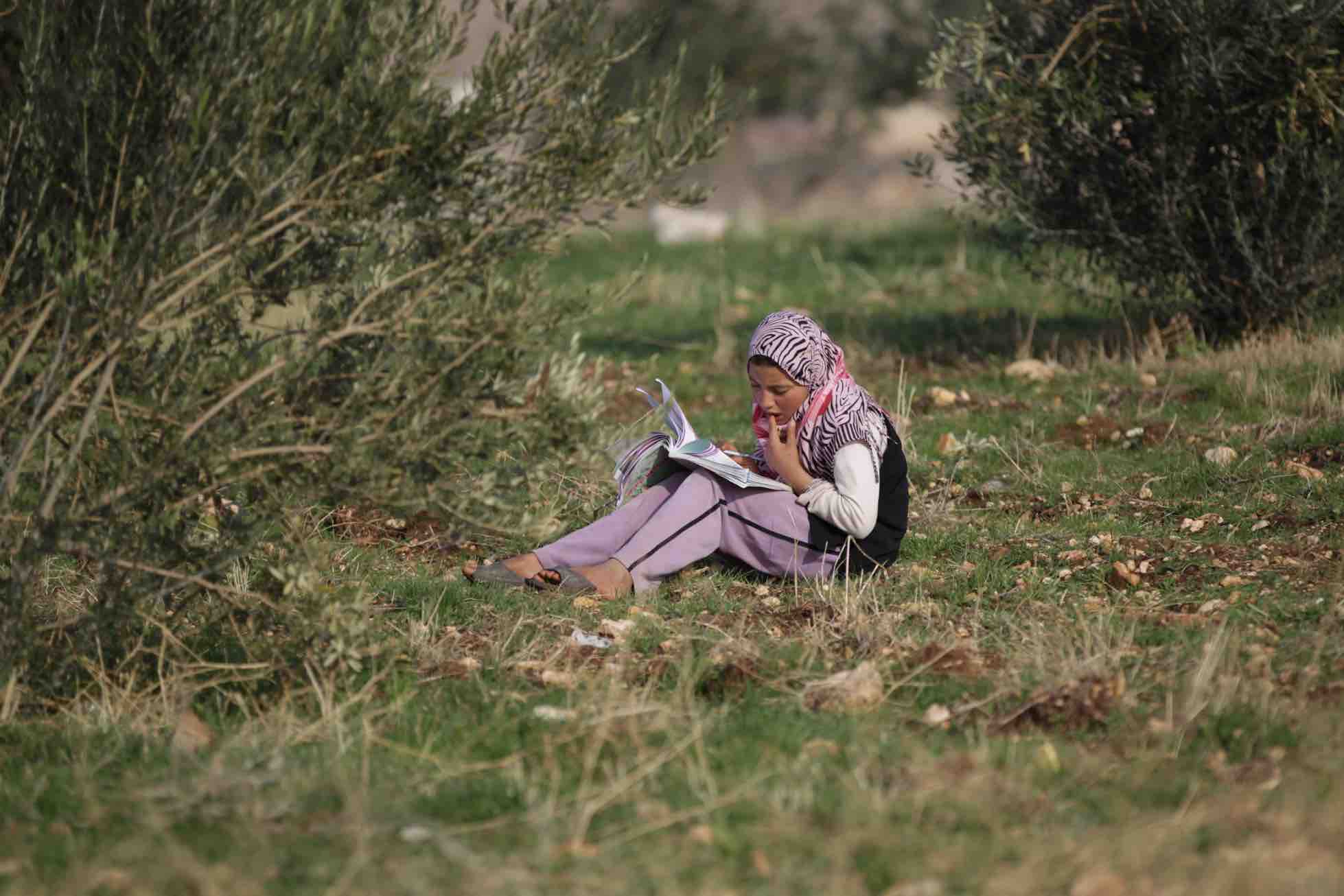In War-Torn Syria
Caves, Tents, Caravans, Poultry Farms Turned into Schools
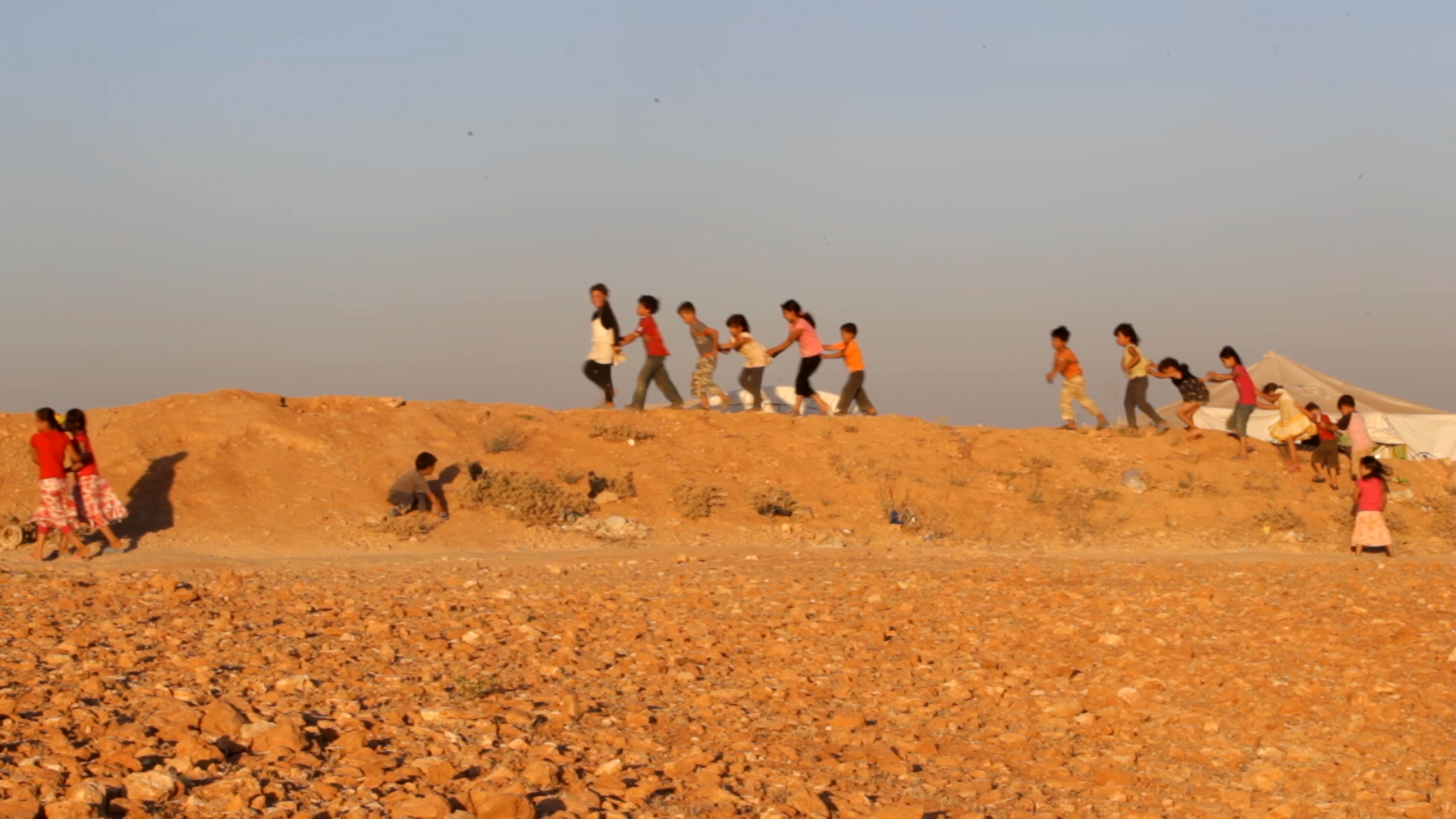
Here is the familiar scene: kids are wearing a clean uniform, carrying schoolbags on their backs, and planting goodbye kisses on their parents’ faces before heading to school.
Some of those little students go to their nearby school on foot and others wait for the school buses to pick them up and transport them.
Arriving at school, students get inside, salute their teachers, and sit at their desks.
This is how perfect a typical day at school begins in most countries. But certainly not in Syria.
The situation in Syria is completely different. The ongoing war raging there over more than 11 years has forcibly offered hard choices.
Lucky he who can still be able to go to school after the enormous scale of destruction and displacement the country has been experiencing!
No problem if schools are in caves, caravans, or on board of buses! – this is what many students believe in Syria.
It does not matter if a single classroom is filled with a group of uneven-aged children; and it is definitely a place where a school uniform is an unnecessary “luxury”.
What truthfully matters is that children receive education in a country where half of the child population knows nothing in life except war.
Cave School
No more panic over airstrikes!
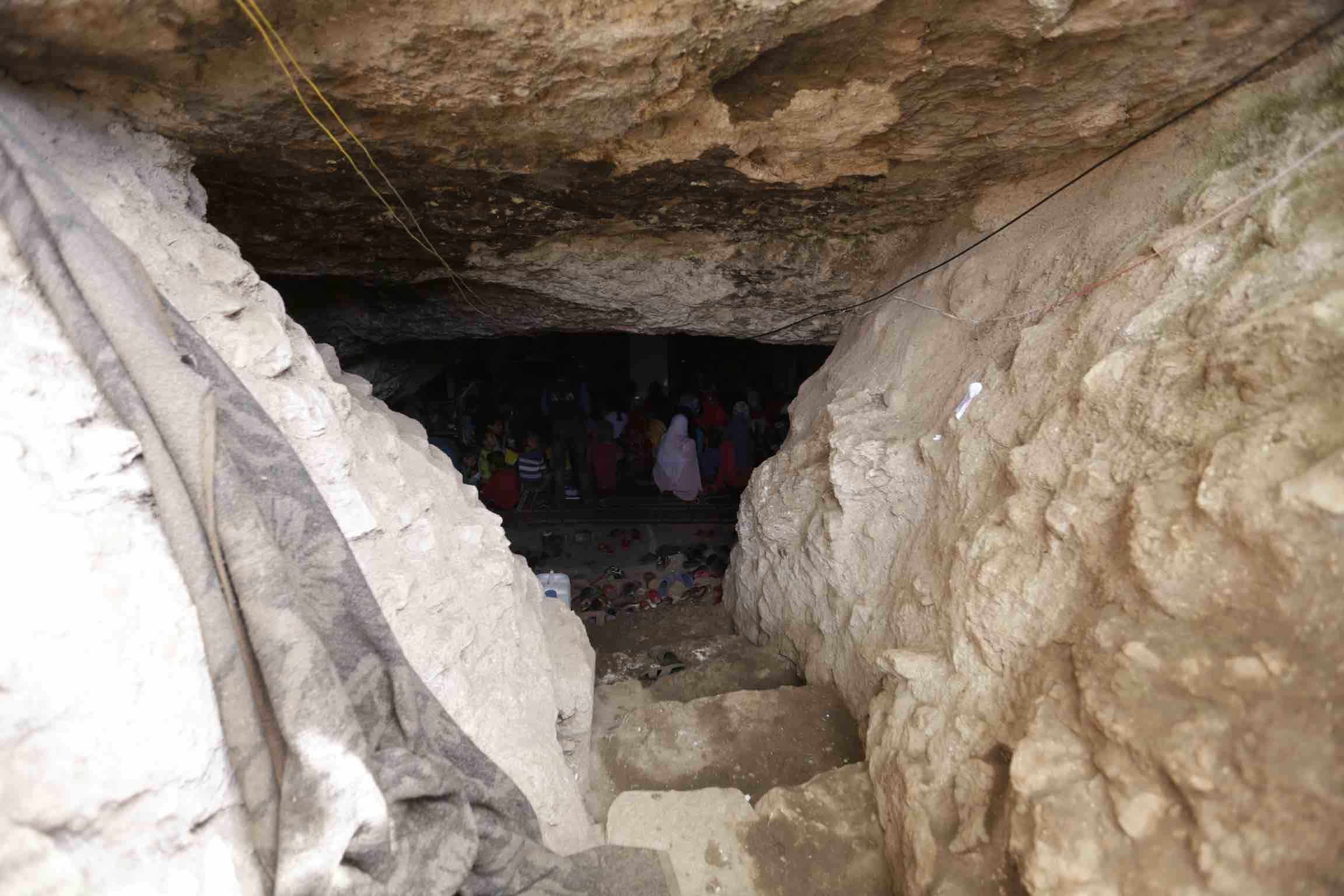
Location: Tramla village, southern rural Idlib
School Name: Not available. Students call it “The Cave”
Shifts: Morning and night shifts
Number of Students: 120
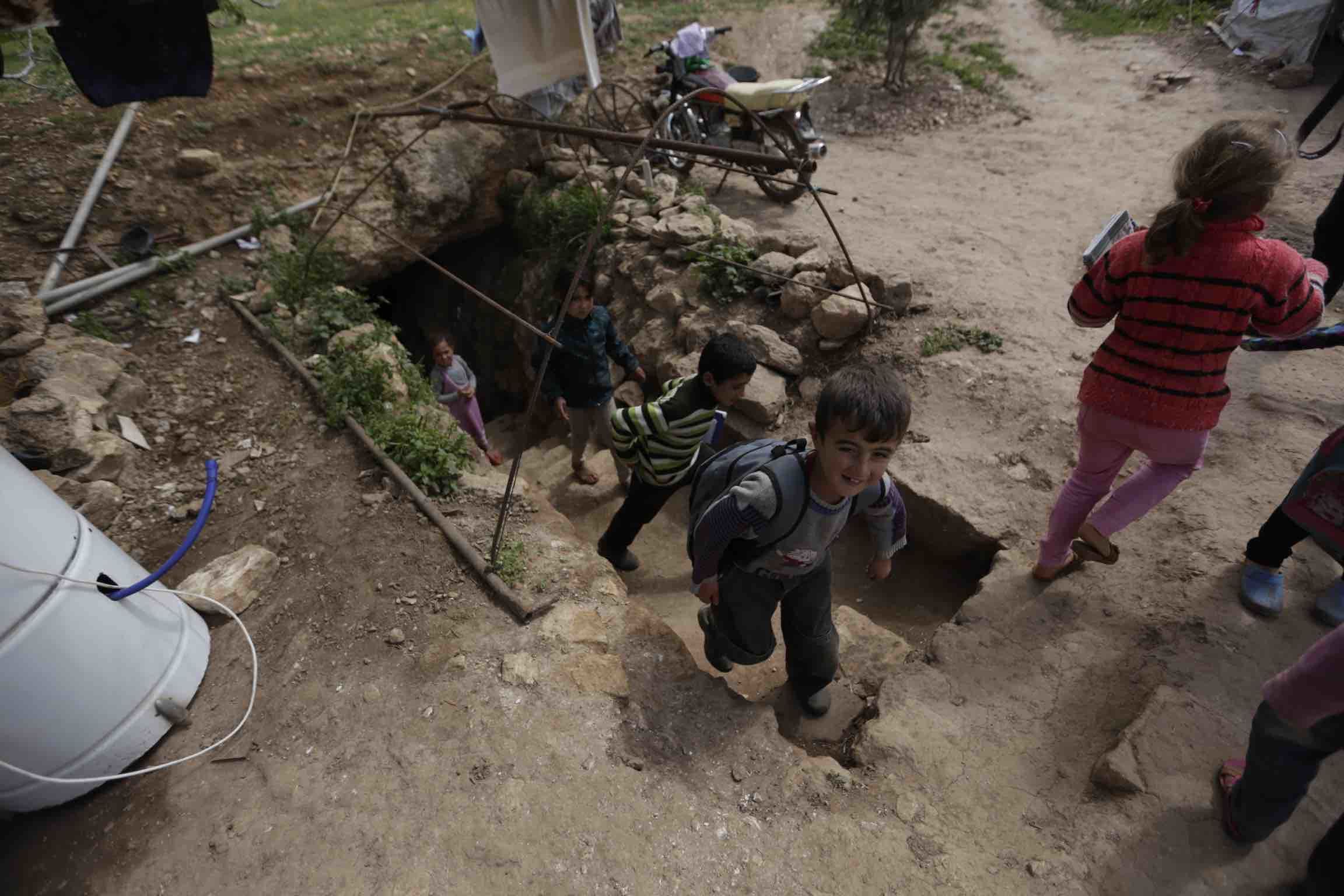
Cave School
Cave School
The first thing to do after getting inside the school is to take off your shoes — just like all students do here. You will find no desks and no seats but only a modest rug spread on the floor on which 60 students sit.
The double-shift school receives 120 students.
At the end of the school day, the cave turns into a night shelter where a group of young men sleep. It is to these young men, who were displaced from northern rural Hama, that the transfer of the cave into a school is attributed.
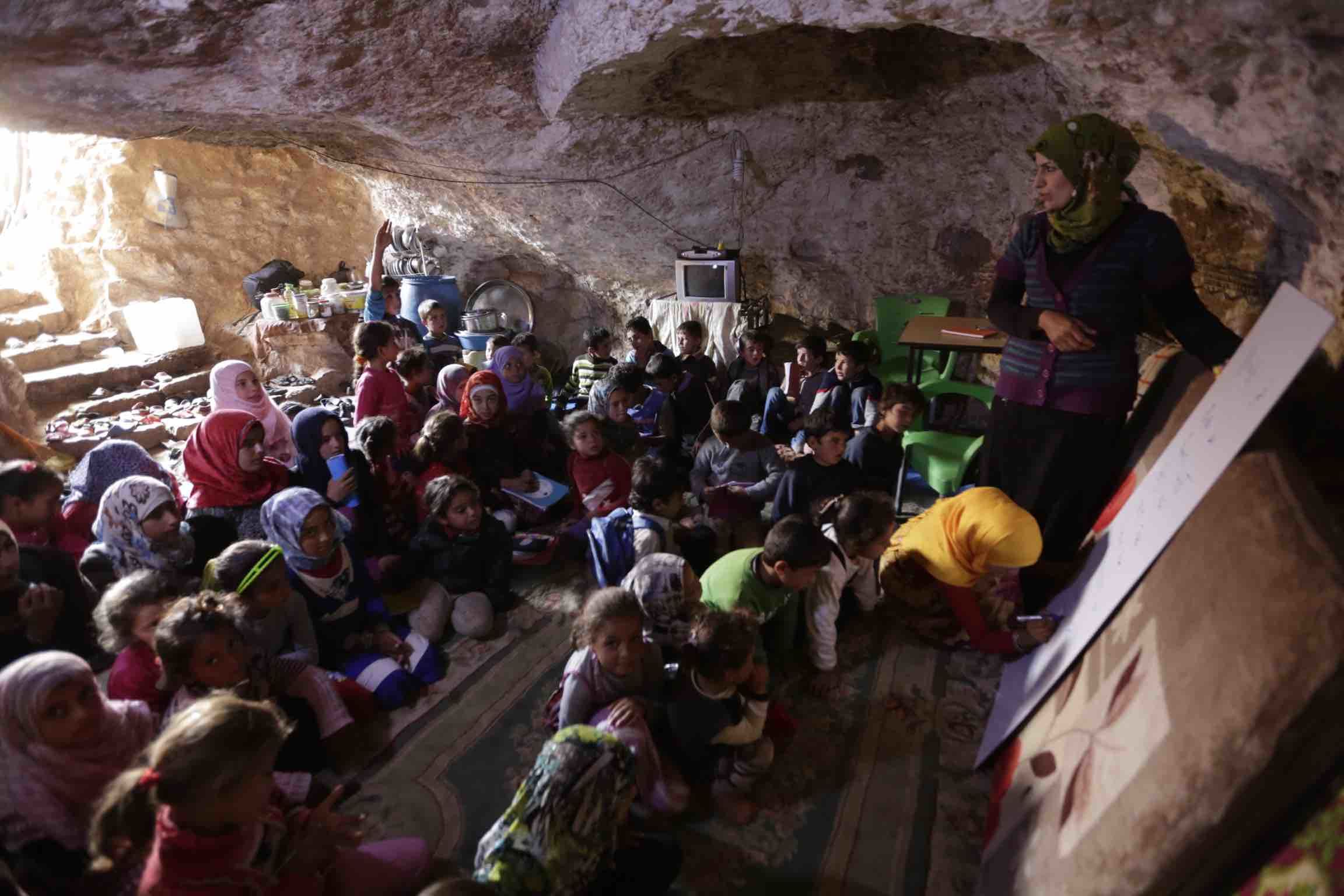
In the Cave
In the Cave
Those school founders were not the only volunteers, though. Teachers, too, volunteered to teach pupils mathematics, English, social education, and religion.
Students dwell in tents on hills located in a vicinity of the cave, in Tramla village, southern rural Idlib. They came to live there along with their families after their displacement from the town of Kafr Nabudah, in rural Hama, fleeing the bombardment which left their houses destroyed.
Inside the classroom, you can see a primitive whiteboard leaning against the wall as well as a shabby string carrying a small lamp to light the place.
The classroom contains pupils of various age groups which poses a challenge for teachers who find it inevitable to explain information and teach curricula that are not suitable for each and every age range.
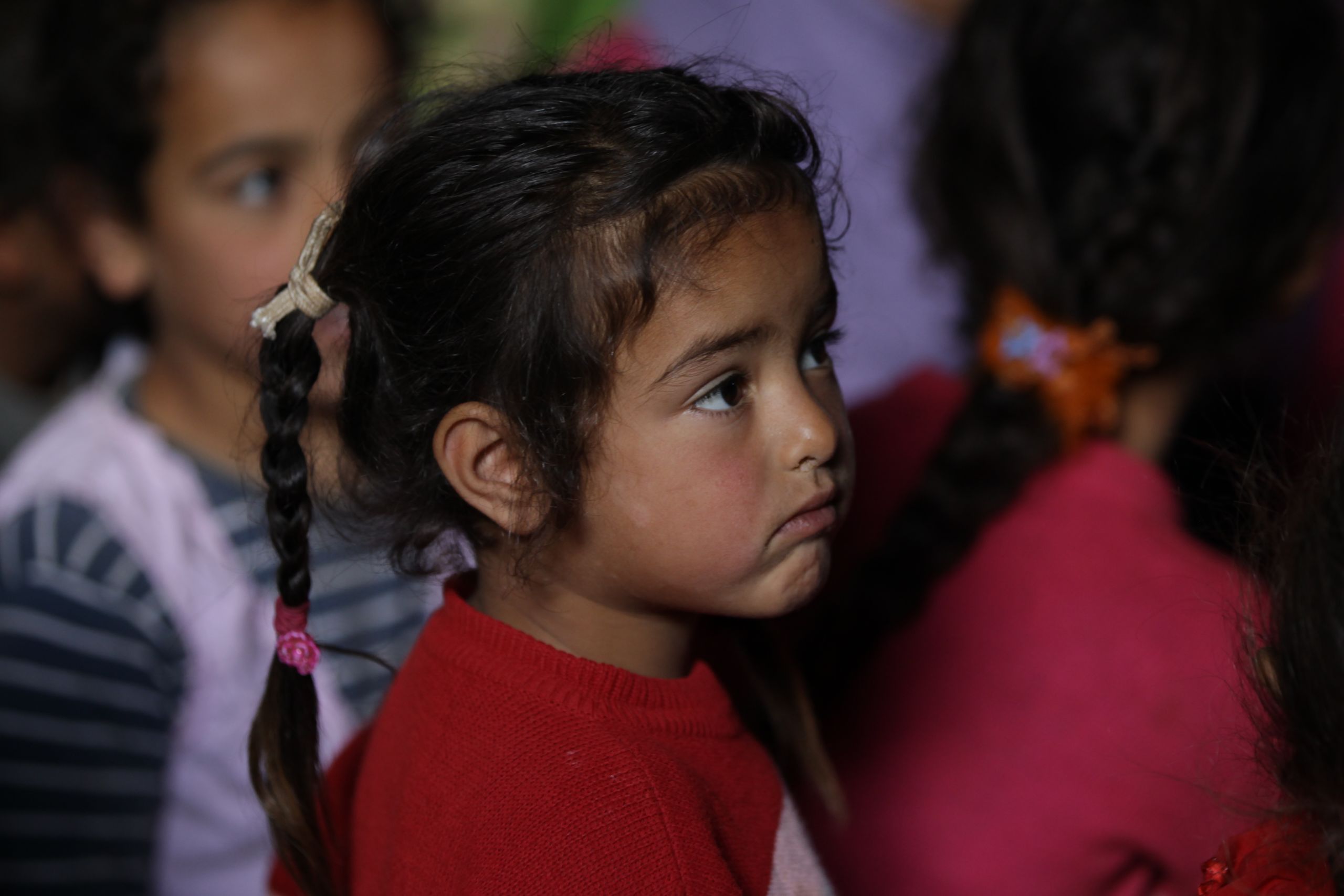
Shahd/6years
Shahd/6years
Shahd, a 6-year-old pupil, said: “the cave is the first school I attend in my life; and I love my friends very much. We play and learn there.”
Not only Shahd but also a huge number of other pupils go to the cave being the first school they attend. “The cave protects us from the airstrikes,” said many students expressing their admiration for the school.
According to the United Nations International Children's Emergency Fund (UNICEF), 2 million children – over one-third of Syria’s child population – are out-of-school and other 1.3 million are at risk of dropping out.
Wreckage School
More than 80 students gathering in one classroom
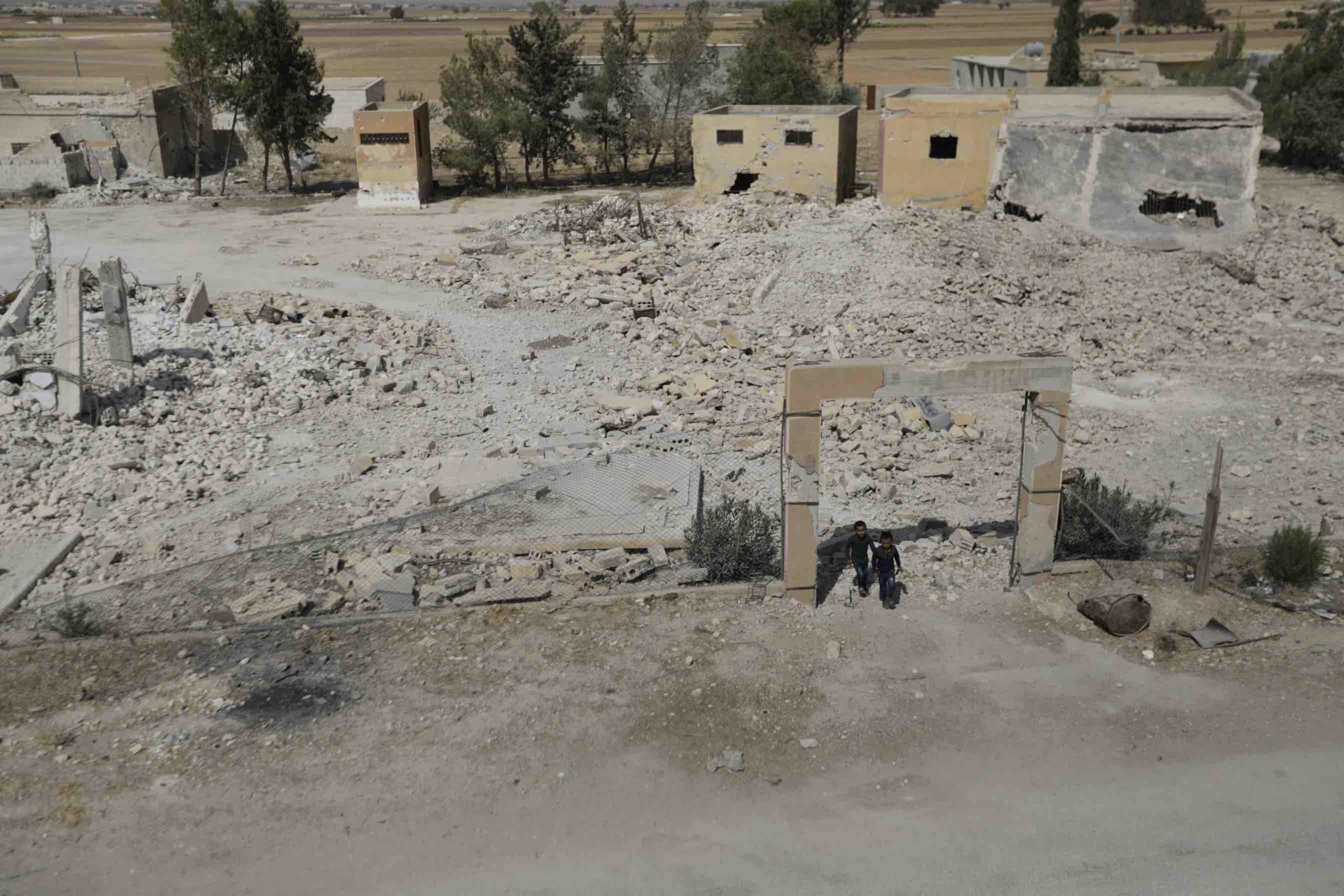
Location: Al-Safalanya village, eastern rural Aleppo
School Name: Al-Safalanya Mixed School
Shifts: Morning shift
Number of Students: Not fixed
Whoever looks at the building of this school from afar will never think even for a second that there is a classroom underneath all this wreckage. On the floor of the classroom sit more than 80 uneven-aged students.
A number of young Syrians have volunteered to teach lessons at the school. Students are welcome to attend morning classes only because lighting cannot be provided at night.
Lighting, however, is perhaps the tiniest problem students encounter — the school also have neither seats nor windows. There is nothing there but debris and what is left of destroyed walls surrounding the students who come to attend lessons.
According to the UNICEF, one in eight children per classroom requires specialized psychosocial support to learn effectively.
Caravan School
It comes to you whenever you are!
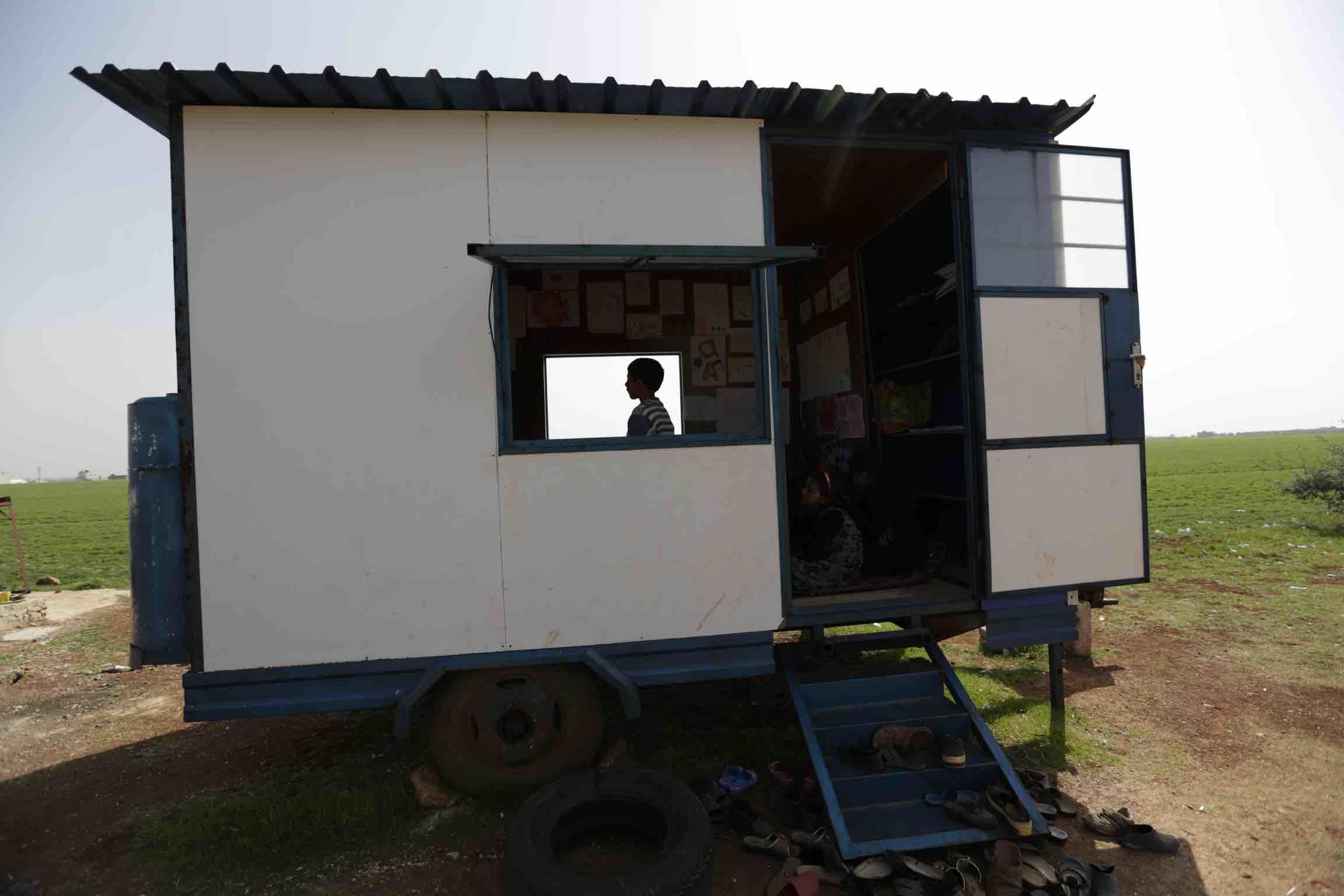
Location: Saraqib city, Idlib
School Name: The Caravan
Shifts: No specific time
Number of Students: Not fixed
To cut long story short, this caravan seeks to offer lessons and undertake leisure activities to provide psychological support to children who have been put under war-generated pressures.
Educating children this way compensates, to some extent, for the lack of schools and the children’s displacement from their hometowns to rural Idlib.
During our visit to the caravan, one of the teachers was giving an English lesson. “Children here have not attended typical schools over the past two years,” he said.
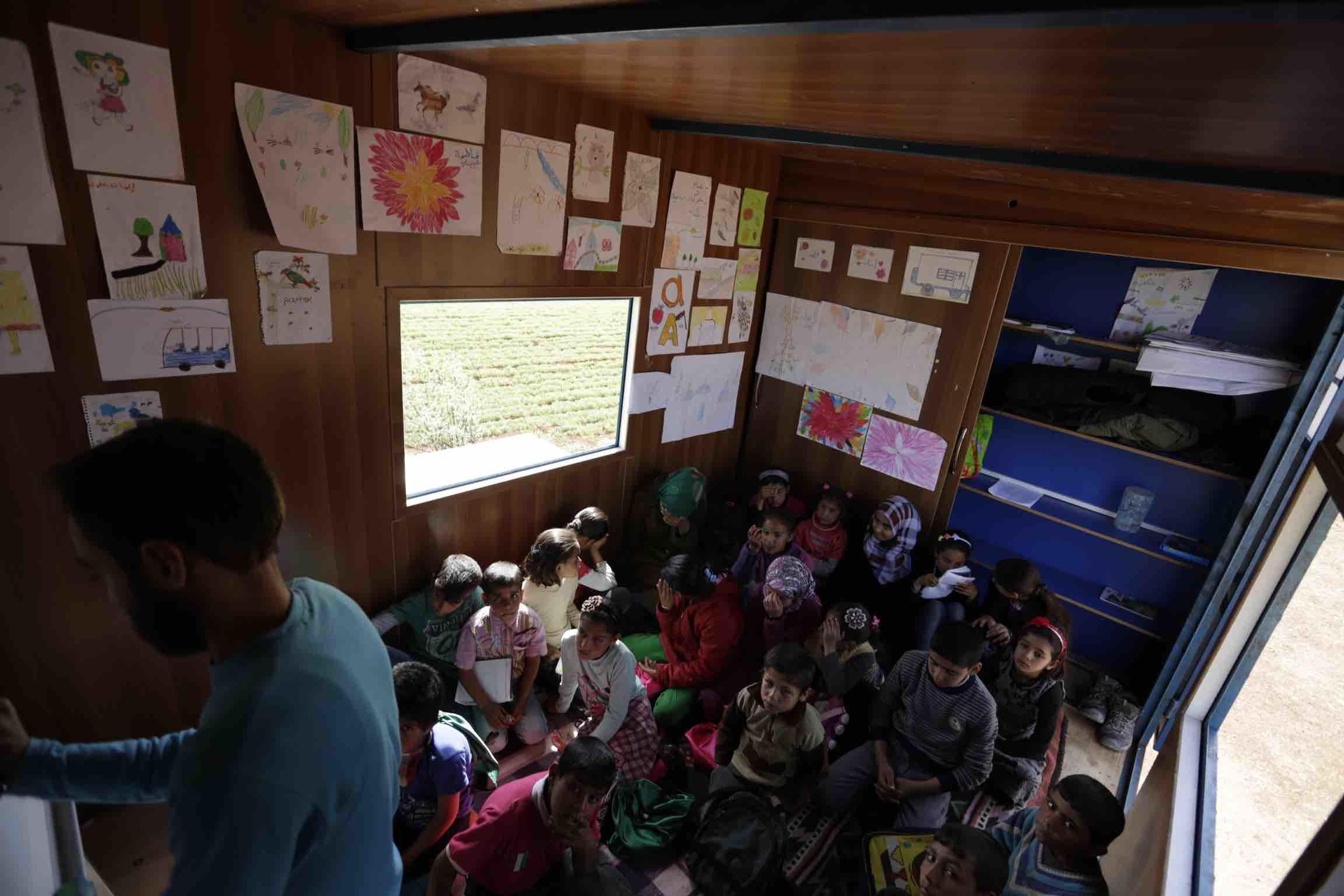
In the Caravan
In the Caravan
As simple as it is, the caravan makes you feel you are in a typical classroom: it contains a whiteboard, children’s drawings hung on walls, and a small-sized bookcase.
The mobile caravan reaches every corner in the village of Saraqib, particularly the areas close to the tents where the displaced people live.
As soon as the lecture ends, students exit the caravan and sit on the floor in front of a window in one of its sides — this announces the beginning of puppet show time.
The children enjoy the dramatic performance and sing along with one of the teachers as he plays the oud (lute).
The UNICEF reported that nine in ten refugee children receive are enrolled in formal schools.
Tent School
Where simplicity has a different meaning!
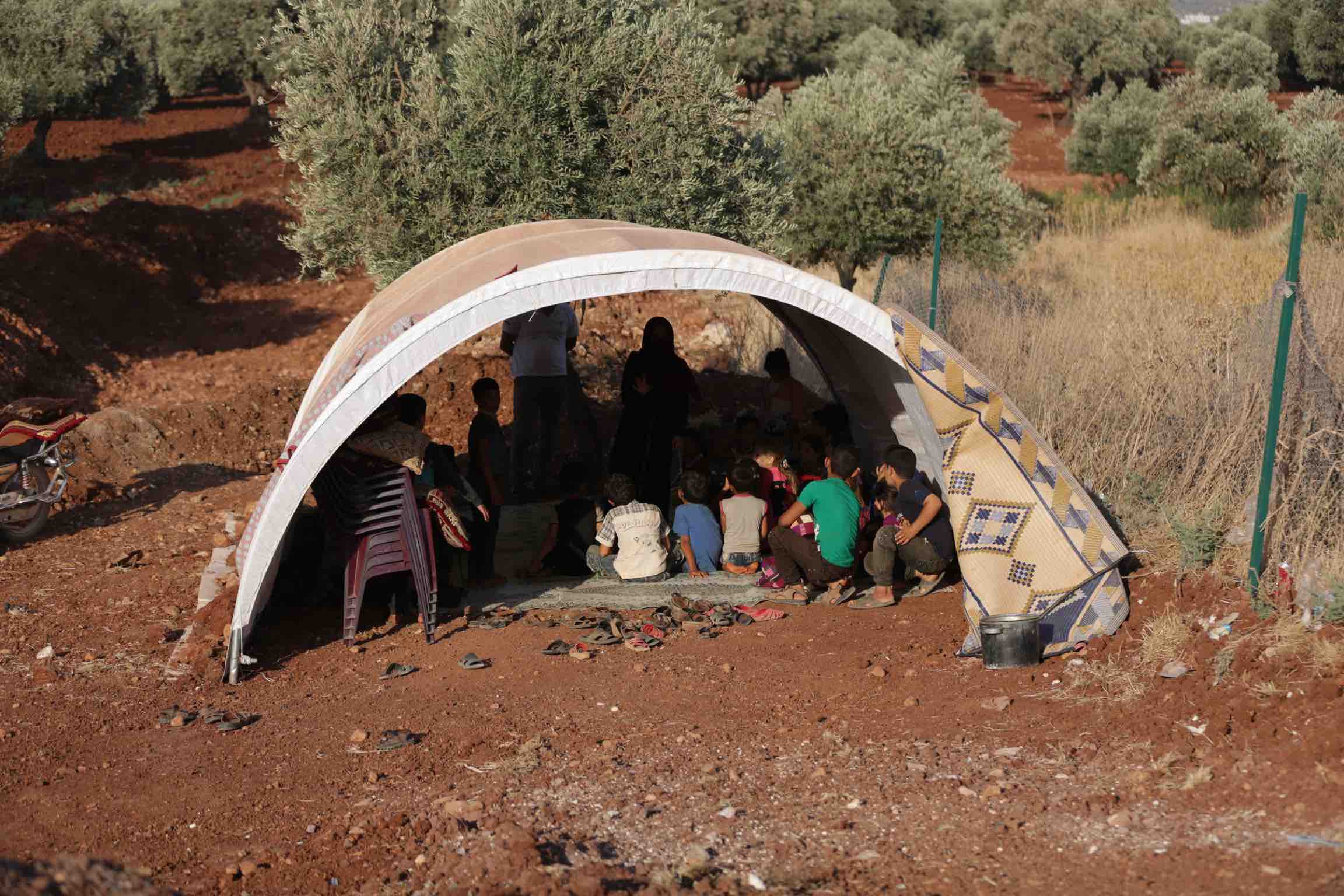
Location: Rural Idlib
School Name: Not available
Shifts: Morning shift only
Number of Students: Not fixed
Rahaf, a 22-year-old displaced girl coming from rural Hama, was the one who came up with the idea of establishing a “tent school”. She teaches lessons at the school with help from another female teacher. The two young women had pitched the tent after paving a piece of land near the olive trees in rural Idlib.
This is how the school was made ready to receive students. And it was supplied with a whiteboard.
“I wish the conditions of the tent were better than that; but, unfortunately, we received no support,” Rahaf said.
Rahaf visited residents in nearby tents and spread the word inviting parents to allow their children to receive education at the tent school. During her visits, she discovered that a huge number of them do not know how to read or write.
Therefore, the curricula taught at the school were meant to be simple mainly seeking to teach children the Arabic alphabet in addition to Qur’an, specially that Rahab is studying at the College of Shari’a.
The age of the students attending lessons at the school ranges from 2 to 16 years; and their number varies on a daily basis.
An estimated 40 per cent of school infrastructure in Syria has been damaged or destroyed in the war.
Poultry Farm School
Warehouses Turned into Classrooms!
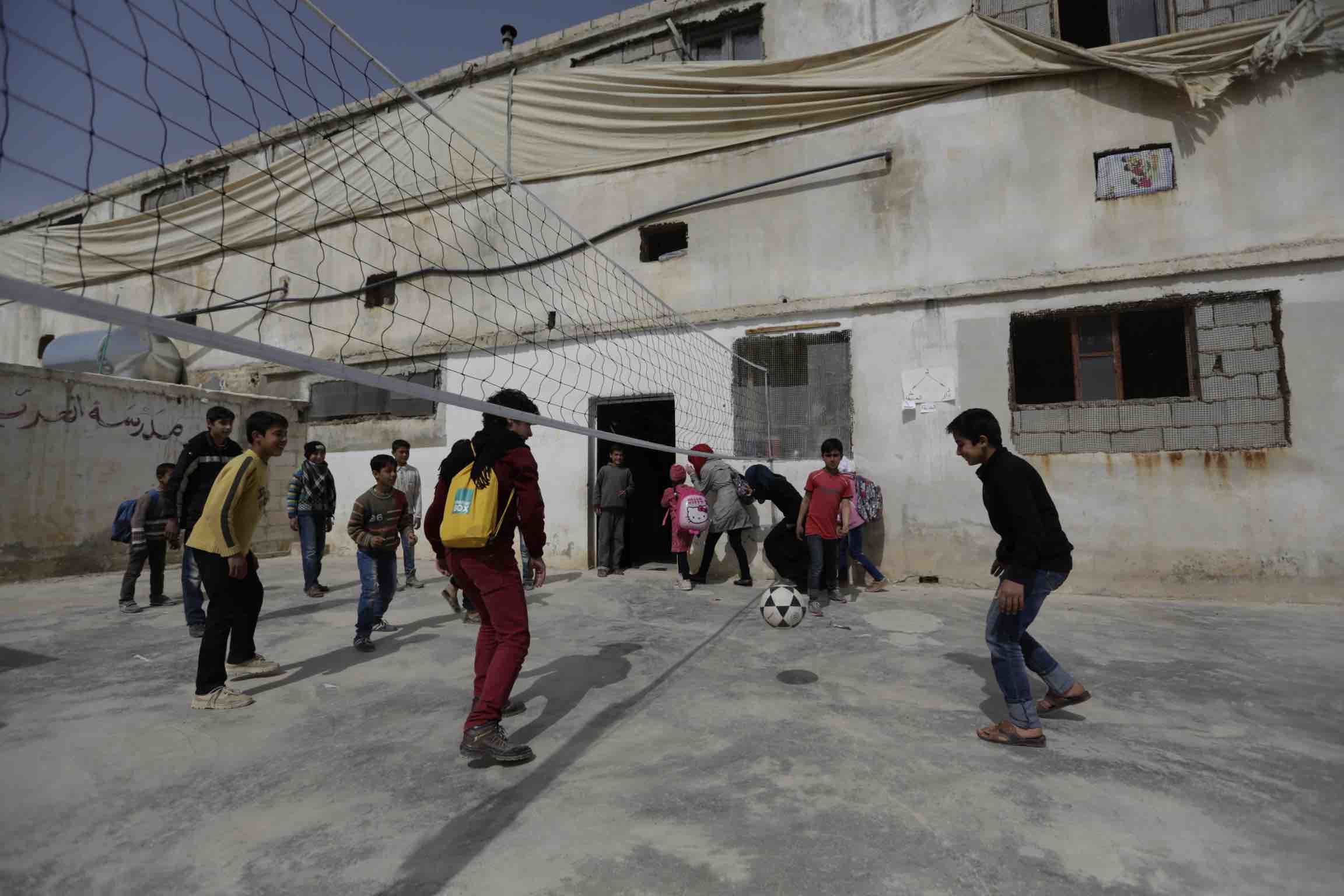
Location: Al-Tamanah village, southern rural Idlib
School Name: Al-Hurreyah
Shifts: Morning and night shifts
Number of Students: 300
The school had served as a poultry farm and a feed warehouse before being turned into a place suitable for teaching students. The rooms were turned into classrooms containing wooden desks.
The school contains 7 classrooms and receives first- to Ninth -grade students.
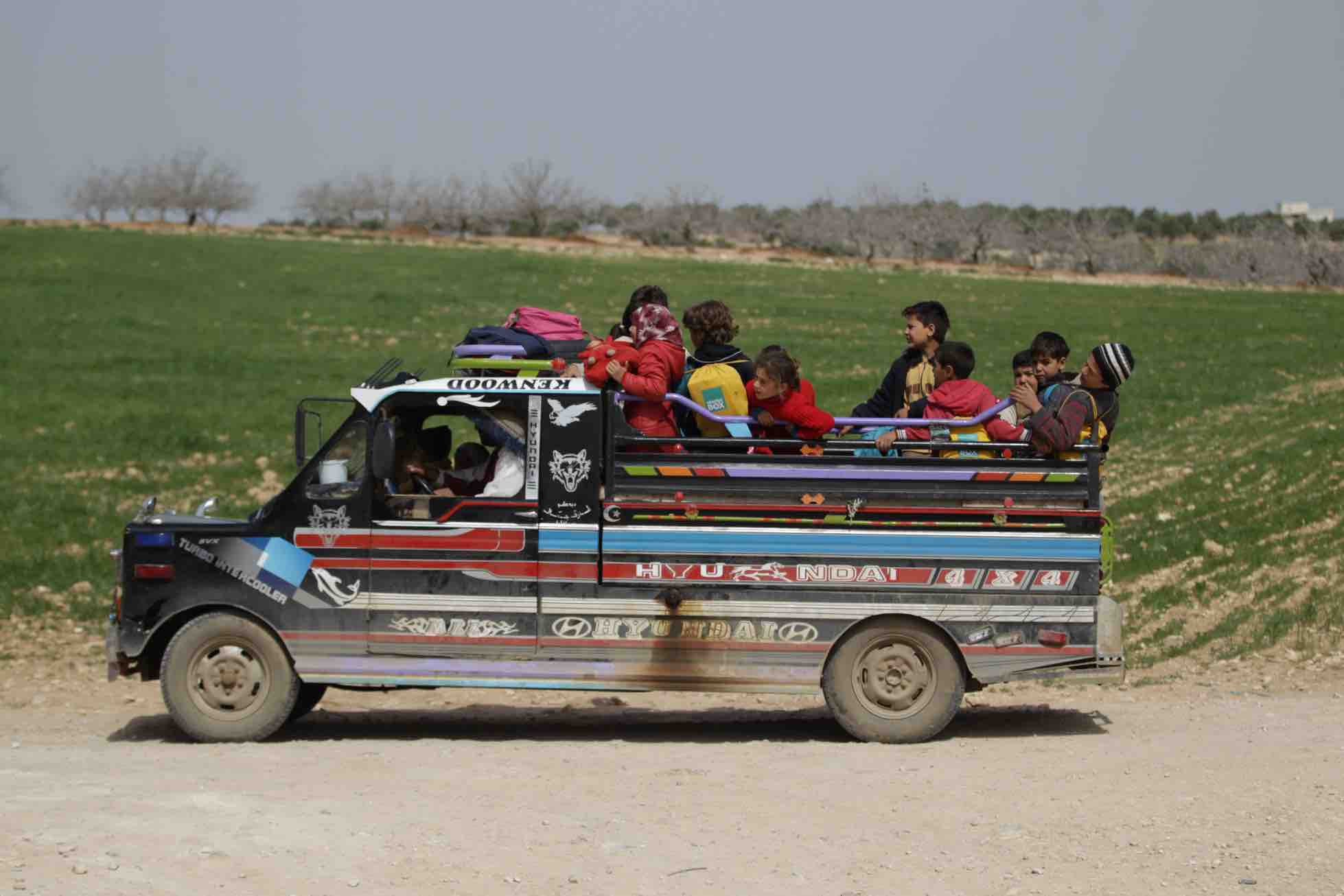
The journey a student makes to reach this school is extremely tiring because the student who is the closest to the school lives 4 kilometers away. Therefore, some residents jointly pay a sum of money to a driver with a huge truck to pick up their children and take them to school.
Nevertheless, some of the students walk a long distance to go to school on foot.
And, More than 800,000 children remain out of school.
